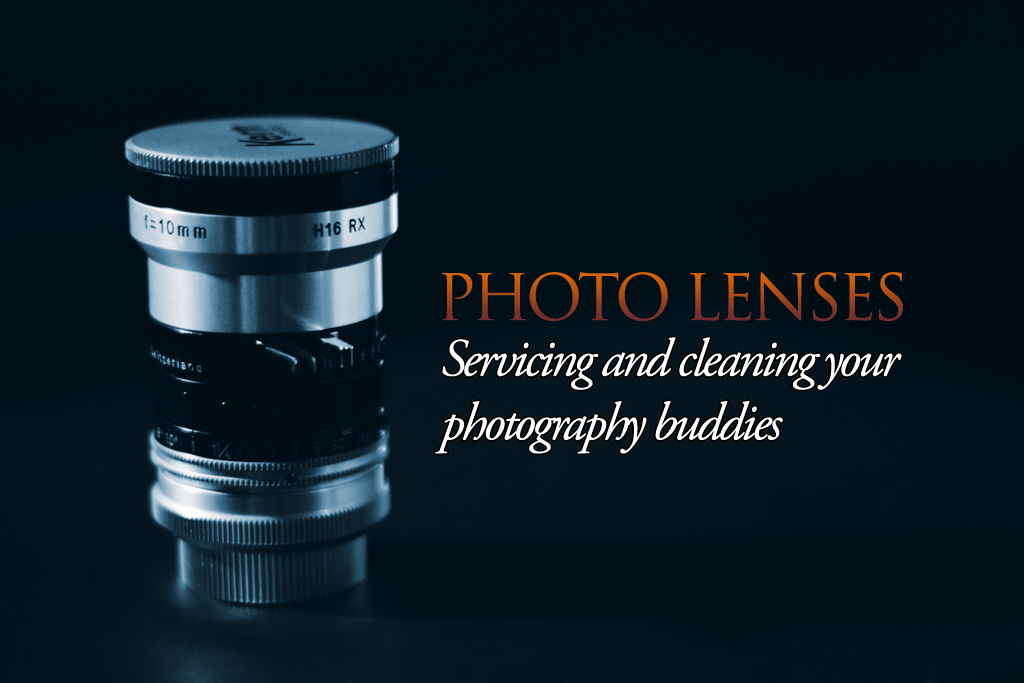The quality and look of images depend on a variety of factors: photographer's skills, camera sensor, lens quality, lighting, etc., but nothing can be more annoying than taking a great photograph and finding out there are lots of black specs or artifacts coming from dirty lens optics ruining your wonderful composition. You may think it's an easy fix with photoshop but you are really better off by making sure your lenses are always clean and ready to shoot. These are some simple steps to keep them in top-notch condition.
Always protect your lenses with a UV filter:
The filter won't just deal with the UV light hitting your lens but also help to protect the front element from getting scratched or damaged by accidental drops. You can find some very cheap ones and are so easy to replace in case something happens to them. They are an essential way to protect your glass especially in sandy or dusty environments.Keep your front element clean as much as possible:
Overtime, the front element of your lens will get dirty with smudges, fingerprints, skin oil marks, dust, etc. Usually, a simple UV filter can help to avoid having to touch and clean the actual lens glass but in some situations you will have to clean it. In that case, first make sure to blow out any dust or dirt and use specialized lens cleaner solution and cloth to wipe out the surface. Never use your breath to clean the glass as it contains organic material that can eventually deteriorate the coating and elements within the lens.Never store your lenses in the closet:
Avoid dark, damp and humid places to store your lenses as these are the perfect way for them to develop the dreaded fungus. Make sure they are stored in cases to protect them from dust but keep ventilating them once a week and let them sit in the sun or open air so they can breathe for a while.Check for internal fungus against a light source:
Fungus can easily spread once it hits the optics of a lens and travel way deep inside. The best way to detect this is by holding your lens pointing directly to a bright light source and check for spots or spider web looking artifacts in the glass. In case you do notice some of this, it is best if you have your lens professionally serviced and cleaned. Dismantling a lens can be a complicated task and you can risk damaging the glass in the process.The dust blower is your lens best friend:
They are cheap and such a great tool to keep your optics and lens barrels free from dust and sand. It is recommended to give a good amount of air blows to each lens before you store them or after a day of shooting.Clean the lens barrel as well:
The glass elements are not the only part of the lens that require cleaning. The lens barrel is also an essential part of your optics and it must be free of dirt if you want your lens to keep functioning smoothly. Zoom lenses tend to store gunk and dirt between the layers of the barrel and this eventually affects the focusing and zooming smoothness. Fungus can also grow on the barrel so it is recommended that you wipe its surface with rubbing alcohol and let the lens sit in the sun for a while.Always keep your cleaning tools clean:
Any cloths, brushes or other elements used to clean the lens must always be clean before you rub them against optics or you risk scratching the glass and affecting the coating. It is especially essential to wash any cloth used for wiping out fungus before reusing it because you can be spreading the fungus to other lenses or components.Put the lens caps on when not in use:
Finally, do not forget to use the lens caps when storing or not using your lens as it will add another layer of protection to your glass. The front cap on is especially handy when you are shooting and have a DSLR hanging from your neck, as it is so easy to bump your lens against something while walking or moving around.
Lenses are an integral part of photography and by keeping them in good condition we can count on getting pristine images on every shoot. So next time you are using or storing your lenses think about these simple steps and they will continue to capture all of your photographic adventures.


